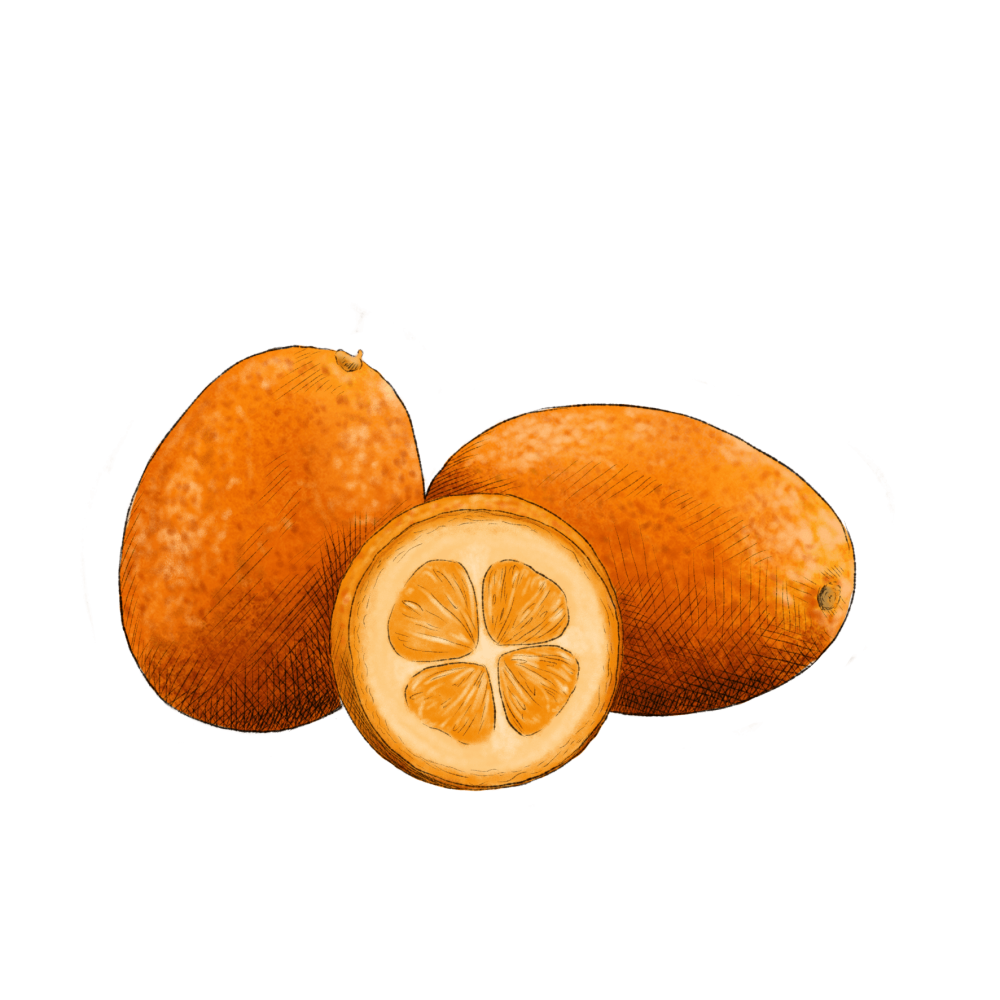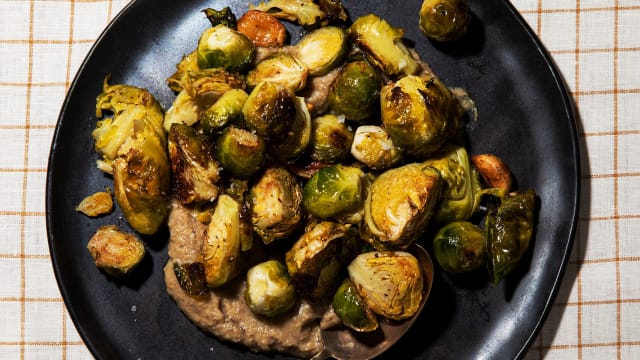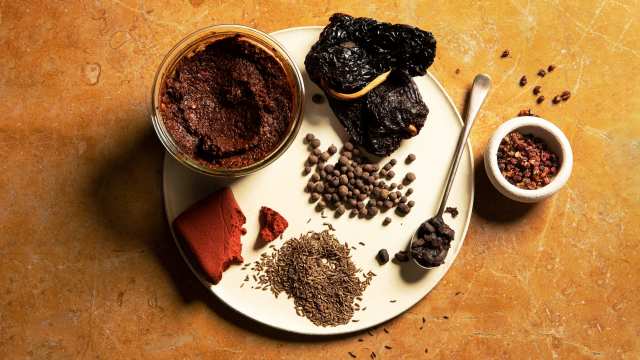Kumquat

Latin name: Citrus japonica
Other names: cumquat
Uses: fruit, preserves
What are kumquats?
Kumquats are everything you love about oranges, but super-concentrated into a package about the size of an olive. With their edible skins, they’re basically nature’s Sour Patch Kids.
Why are kumquats healthy?
Kumquats are high in vitamin C as well as a source of vitamin A, calcium, and potassium. Lab studies show its essential oil can inhibit some bacterial growth and could be useful as a natural food preservative. It is also high in poncirin, a compound that may help fight obesity, heart disease, and type 2 diabetes. In some traditional medicines, kumquats are used to treat colds, coughs, and other inflammatory issues in the respiratory tract.
What do kumquats taste like?
Kumquats are juicy, sour, and slightly sweet, with a glorious piney-terpene bitterness and high concentration of limonene in the skin, giving them a hyper-orange flavor. Kumquats are brightly acidic, though less tart than a lemon or lime.
How do I use kumquats?
Slice raw kumquats thinly and add them to sturdy winter salads or just sprinkle with chile-lime salt for cocktails or a fruit ceviche. Leave them whole to simmer in syrups as a varenye, candy them in the Chinese style as tanghulu, or preserve in salt like lemons in Mediterranean and North African cuisine. Kumquats are also lovely chopped and stewed into marmalade, chutney, or conserva.
What do kumquats pair well with?
You can use kumquats anywhere you would an orange — they love vanilla, rum, and chocolate as much as sesame, soy sauce, and dark, bitter greens. Kumquats’ subtle pine flavor also makes them a really beautiful match for rosemary in savory dishes, or with burnt/caramelized sugar, which complements the bitterness in kumquat peel. The acidity is also really effective at brightening up and balancing the sweetness of earthy vegetables like beets, sweet potatoes, and winter squashes.
Where do kumquats grow?
Kumquats are native to China, with the earliest written mentions coming from 12th-century Imperial literature. They were introduced to Europe in 1846, during the Victorian orangery craze, but they don’t actually have to be grown in glass houses; they’re among the more cold-hardy citrus fruits and can withstand temperatures well below freezing. Today kumquats are mostly grown in China, Japan, and the Philippines.
How to buy kumquats:
Look for them fresh when other winter citruses are in markets and inspect for moldy or mushy spots — the fruits should be plump and firm, with shiny, wrinkle-free skin. You can keep them at room temperature (in a tiny bowl!) for a few days or store them in the fridge for up to a month.
Fun kumquat fact:
Though they’re a citrus fruit (and therefore derive most of their flavor from orangey limonene), kumquats have an unusually high concentration of sesquiterpenes — the organic compounds responsible for the aromas of white sagebrush, bergamot, black pepper, hops, and cannabis.




